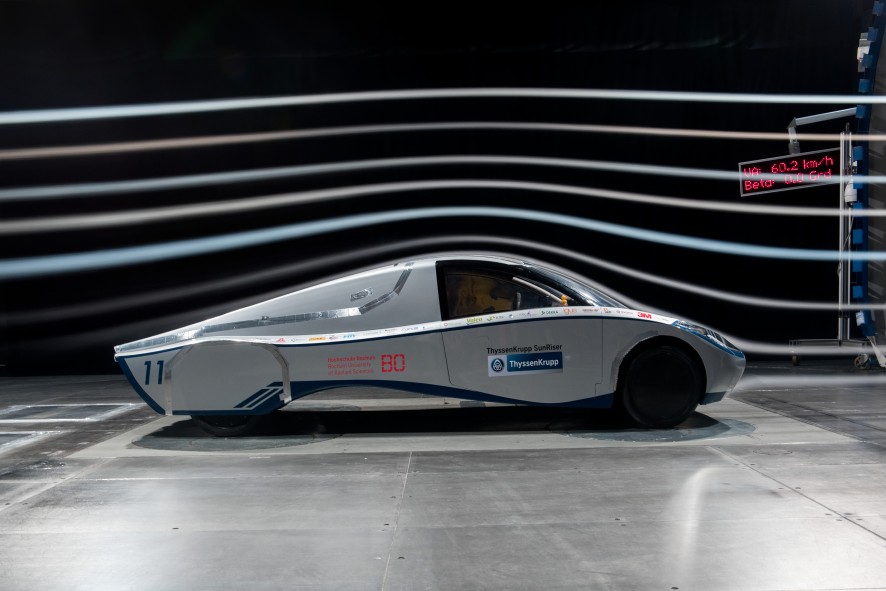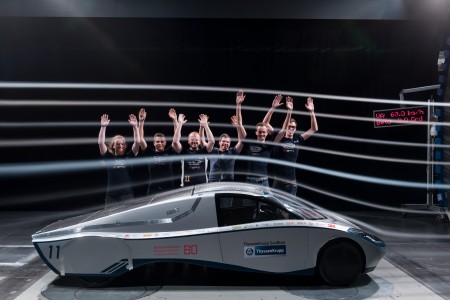Trade press, Daily press, 2015-08-20, 11:55 am
Weathering the storm: Solar sports coupé “ThyssenKrupp SunRiser” tested in wind tunnel

The “ThyssenKrupp SunRiser”, the solar-powered sports coupé built by students of Bochum University, has undergone aerodynamic testing in the wind tunnel of a major automobile manufacturer. The aim was to simulate fast driving and visualize turbulence around the body using special smoke, allowing the car’s builders to see where work was still needed to streamline the vehicle. “The tests were very important in order to optimize the car’s aerodynamics and reduce its energy requirements,” says Matthias Wiemers from Bochum University. “We will be running more tests on the Lausitzring race track before the ThyssenKrupp SunRiser sets off for Australia very soon,” explains the SolarCar project manager. There the prototype will compete in the World Solar Challenge in October, the only German car taking part. “The tension is rising but we’re also really looking forward to the competition,” says Wiemers.
The solar sports car lines up in Australia with expectations high. It was built as part of a research collaboration with ThyssenKrupp. In building the new electric vehicle the students have put their faith in a multi-material design. In addition to the carbon fiber generally used for solar cars, the SunRiser features high-strength complex-phase steel in the roll bar and magnesium in the dash panel and center tunnel. The Bochum team also placed particular emphasis on an appealing interior design. Real wood veneer creates an elegant ambience, while a pitman arm and handbrake handle, unusual in solar cars so far, demonstrate a high degree of everyday practicality. The roadworthiness certificate proves that the required safety standards are met.
Three square meters of high-performance solar panels are fitted to the roof, designed to produce 870 watts of electric power in perfect sunlight. This energy is transmitted to hub motors installed in the rear wheels. The car tips the scales at 360 kilograms. Distance warning system, central locking, central info display, seat heating – the specs leave little to be desired.
With a top speed of 120 kilometers per hour the vehicle may not be as fast as conventional sports cars but what matters more in the 3,000 kilometer World Solar Challenge in Australia is efficiency, and this is where the ThyssenKrupp SunRiser shines. Its predecessor came second in the 2013 race, setting the bar high for Germany’s only representatives this time, who are determined to challenge for the leading places with their brand new race car.
More information: www.hochschule-bochum.de/solarcar.html and www.worldsolarchallenge.org.
World Solar Challenge every two years in Australia
The World Solar Challenge takes place in Australia every two years and is run on public roads bisecting the continent from north to south. The ThyssenKrupp SunRiser will compete in the cruiser class, where the regulations stipulate practicality, a roadworthiness certificate in the country of origin and at least two seats. In addition to the energy recovered during driving from the solar panels on the car’s surface, the batteries in this class, which must weigh no more than 60 kilograms, may be recharged once from the mains after 1,500 kilometers. The cars will hit top speeds of over 120 kilometers per hour. The challenge begins on October 18, 2015 and ends six days later at the finish line in Adelaide.







